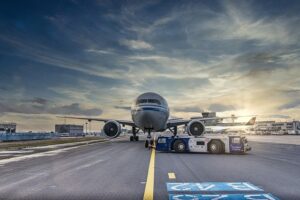Other Work-Related Visas (6 of 11)
This article is a part of the ‘UK Immigration and All UK Visa Types in 2022’ article series. You can get all the links to articles and videos from this series HERE.
Below, I’ll explain the remaining work-related visa categories.
Due to the size, I’ve divided this article into two parts. In this part, we’ll concentrate on:
- Turkish Businessperson
- Turkish Worker
- Private Life in the UK applicants
- Windrush applicants
- Seafarers
- Aircrew
I’ve covered:
- UK Ancestry applicants
- Frontier Worker
- Hong Kong British National (Overseas)
- Overseas Domestic Workers
- Representative of an Overseas Business
Turkish Businessperson Visa

This route is no longer available to new applicants. Only dependent children under 21 can apply outside the UK to join the main applicant in the UK. You can only apply to extend your stay in this category when already in the UK.
This visa extension will allow you to continue running your business in the UK and start another one. Alternatively, you can continue to help run an established business in the UK.
To be eligible to apply for an extension of your Turkish Businessperson visa, you need to:
- have a valid Turkish Businessperson visa
- show you have not broken any immigration laws
- keep running a viable business
- keep being able to pay your share of the costs of running the business
- show that your share of the profits continues to be enough to support you and your family without your needing to have another job
If you are part of an existing partnership or company, you’ll need to show that you still have an active part in running the business.
Turkish Worker Visa
This route is very similar to the Turkish Businessperson route. However, this one is Turkish nationals, who are employees (as opposed to Turkish business owners).
This route is also now closed. Only dependent children under 21 can apply outside the UK to join the main applicant in the UK.
If you have worked in the UK for under 4 years, you can change employers. However, you’ll need to stick to your occupation. For example, if you worked as a hairdresser at ABC Hairdressers Ltd., you can change jobs and start working at XYZ Hairdressers Ltd. However, that is provided you will continue working as a hairdresser.
After working in the UK for more than 4 years – you can work in any occupation for any employer.
As with the Innovator route, you can apply to extend your visa as many times as you like, provided you still meet the eligibility requirements.
After 5 years, you may apply to settle in the UK permanently. It is also known as ‘indefinite leave to remain’. This gives you the right to live, work and study here for as long as you like and apply for benefits if you’re eligible.
Private Life in the UK
Although changed and amended many times, this is a very, very old UK immigration route.
You can only apply on the basis of your private life if you’re already living in the UK.
There are four circumstances when you may qualify:
- when you are under 18, and you’ve lived in the UK continuously for at least 7 years, and it would be unreasonable to expect you to leave the UK
- when you are between 18 and 24, and you’ve lived continuously in the UK for more than half your life
- when you are 18 or over, have spent less than 20 years in the UK and would have very significant problems living in the country you’d have to go to – for example, you do not speak the language and could not learn it, and finally
- when you are 25 or over, and you’ve been in the UK continuously for 20 years
If you qualify, you can work in any field. Your employers don’t need to be registered with the Home Office to employ you. Also, your family members can apply on the same application with you.
Windrush Scheme Applicants
You may qualify to apply under the Windrush scheme if:
If you’re settled in the UK and:
- you came to the UK from a Commonwealth country before 1973; or
- your parents came to the UK from a Commonwealth country before 1973; or
- you came to the UK from any country before 31 December 1988 and are now settled here.
This application is free. If your application is successful, you will be able to work in the UK without any restrictions. You can also claim benefits, access the NHS, and study in the UK.
If you suffered losses because you did not have documents
If you are eligible for this scheme, you might also be able to apply for compensation. The compensation scheme is for losses that happened because you could not show that you had a right to live in the UK.
‘Losses’ can be things like not being able to work, find a place to live or get health treatment. They can also include immigration action, like detention or removal from the UK.
You’ll need to use this form to apply under this scheme.
Seafarers
This route is not that well-known because this category is covered in the Immigration Act 1971 instead of the Immigration Rules.
In very simple terms, seafarers are visitors in transit when they have a contract to join a ship or are in transit as part of a crew.
To qualify, seafarers need to have a valid passport and a SID. SID is a seafarers’ identity document (SID) containing a photograph, signature (or fingerprints) and a description of the holder, including nationality.
If seafarers travel on their ship as part of a crew – generally, they don’t need entry clearance (visa granted outside the UK to enter the UK). However, if they intend to join the ship in the UK, they’ll need to apply for prior entry clearance. It is unless they have a document issued by a country that has ratified the 1958 International Labour Organisation (ILO) ‘seafarers identity documents convention No. 108 (see CRM1.6 below).
What is interesting to note here is that the document needs to be issued under the convention. However, the holder does not need to be a national of that country and can also be a stateless person to be considered visa-exempt.
Aircrew

As with seafarers, this route is covered in the Immigration Act 1971 as opposed to the Immigration Rules. Under the 1971 Act, a person who arrives as a crew member of an aircraft does not need a visa if he intends to leave the UK within 7 days on that or another aircraft.
Airline crew members do not need prior entry clearance if they:
- are operating crew (including stewards and stewardesses);
- are holding their licences or valid crew members’ certificates and passports; and
- are departing, as a member of the crew, on the same aircraft from the airport at which they arrived or within seven days on another aircraft
If you are part of the crew intending to stay longer than 7 days, you’ll need to have entry clearance (visa applied from outside the UK). Those who wish to extend their stay after entry need to apply in the UK for ‘leave to remain’. ‘Leave to remain’ is a visa, which the UKVI granted in the UK, allowing you to stay longer than the initial period.
However, you need to bear in mind that aircraft security guards, the crew on training, loadmasters, engineers and others are not regarded as operating crew. They will need their passport and, where applicable, visas.
The same rules apply to airport-based operational ground staff of overseas-owned airlines. This includes:
- station managers
- security managers
- technical managers
- engineers and loadmaster
- air travel assistants
These people need entry clearance before they travel to the UK. Also, they need to apply for permission to work under the points-based Immigration system – skilled workers.
You can read the first part of this article here.
